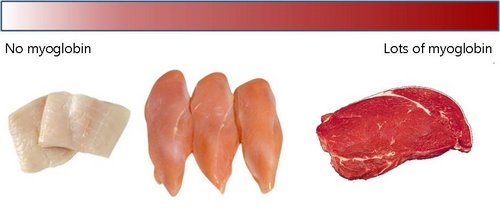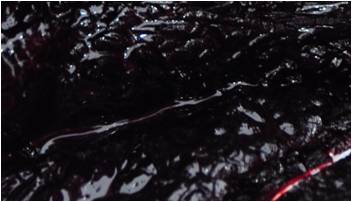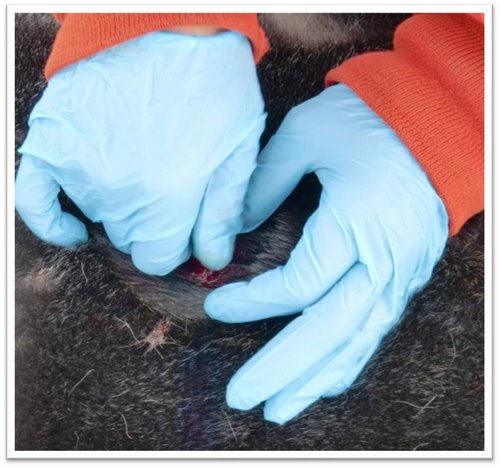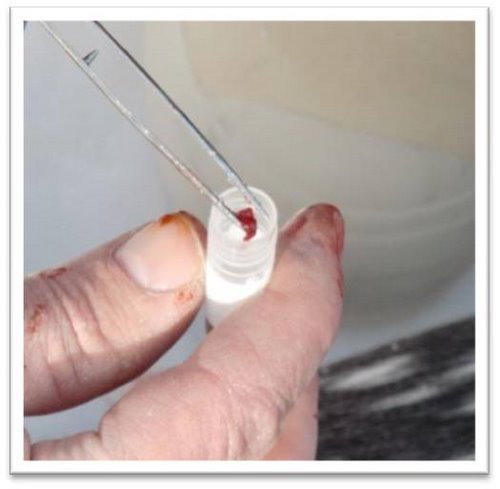This journal brought to you by...
- Becky Shimp and her 6, 7 and 8 grade students
- Mrs. Garay and her students at Redd School
- Bailey Station 4th grade APEX
A Closer Look at … a Weddell Seal’s Muscle
An animal that spends most of its life swimming has got to have some pretty good muscles, right? Seals do, and they use their muscles very efficiently. Let’s find out how!
Oxygen - a key to doing work
In order to keep their muscles working when a seal is swimming – you need energy. And, a big part of that is getting oxygen to the muscles – so they can do work. But how do seals get oxygen to their muscles when they spend much of their time under water? You may remember from an earlier blog that hemoglobin is the ‘oxygen carrying’ protein in your blood that carries oxygen to the organs and tissue in your body. But, once oxygen reaches the muscles it is grabbed by another ‘oxygen carrying’ protein in the muscles – called myoglobin. So, think of it this way – hemoglobin carries oxygen to the muscles then myoglobin grabs the oxygen from the blood and stores it in the muscles – so it can do work – like swim.
Myoglobin in muscles
Myoglobin is in the muscles of all animals - yours, mine, fish, chicken and the Weddell seals’. You can actually tell how much myoglobin is in a muscle - just by looking. Myoglobin has pigment or color – the more myoglobin protein there is – the redder or darker the muscle is. Let’s compare the myoglobin in the muscles (or meat) of some animals.

White muscle fish – like flounder or has extremely low levels of myoglobin in its muscle making the fish filet appear white.
White meat chicken – like chicken breast – has low levels of myoglobin. But let’s compare a chicken leg to a chicken breast. Which one has more myoglobin in it? If you chose the darker, leg – you are correct.
Now that you are getting the hang of this – let’s look at the meat of a cow. This juicy steak has high levels of myoglobin. Just, look how red this steak is!
But what about the Weddell Seal? Our research team is testing the seals myoglobin levels. Do you think the seal has high or low levels of myoglobin? Will the seals muscles appear darker than the steak?... The Weddell seals muscle has so much myoglobin that its muscle looks almost black. It has about 10 times more than a cow!
That’s a lot of myoglobin!

Purpose of myoglobin
Its purpose is to store oxygen, which muscles use when they are working. The more myoglobin an animal has in its muscle cells, the longer that animal can do work – like swim, or hold its breath under water. Weddell Seals, like whales and other swimming and deep diving marine mammals, have very high levels of myoglobin. The more myoglobin an animal has in its muscle cells, the more work an animal can do while it holds its breath underwater. So, the oxygen stored in the muscles is very useful to these seals when they go on deep dives foraging for food.

Oxygen isn’t the only key – efficient muscles help!
Here’s a little background. There are two kinds of tissues that need oxygen when a seal does work:
- Organs and tissue that must have oxygen.
- Organs and tissue that prefer to have oxygen.
The brain and nervous system are examples of tissue that must have oxygen – if they didn’t get the oxygen – the animal wouldn’t survive. On the other hand, muscles are a great example of tissue that would prefer to have oxygen but can work even if blood isn’t delivering oxygen to the muscles.

Here’s where the seal muscles become very efficient.
Myoglobin in the muscles really likes oxygen - much more than hemoglobin likes oxygen. So, if the seal is working hard and using oxygen - swimming, diving, and hunting for food – the seals' muscles would take all the oxygen. Do you see a problem here? If the seal is working really hard and the blood is flowing to the muscles, the myoglobin in the muscles would keep all the oxygen. Not a good thing for an organ like the brain. But don’t worry; it’s not a problem for such an efficient animal as a Weddell Seal! When these seals go on a really, really long dive, the seal has the ability to adjust its blood flow – keeping blood flowing to the more vital tissue and organs such as the brain. It’s like the seal is saying ‘Hey muscles, handle this on your own. Generate your own power using the oxygen you have stored in your muscles. We’re not going to give you any more. Blood’s not going to flow to the muscles for a while.’
That’s quite an amazing and efficient animal!


Comments